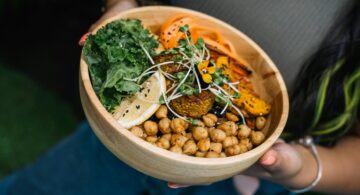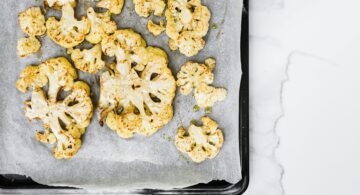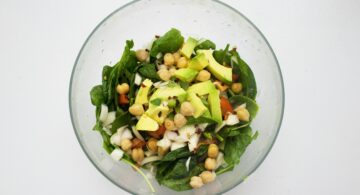9 Reasons to Love Pulses
Take the “Pulse” of Your Eating Habits
by Rob Fischer
Looking for an easy way to lose weight, protect your heart and spend less money doing it? The answer is found in a food that’s been around for millennia. You may even have some in your pantry.
I’m talking about “pulses,” a not-so-well-known term for dried beans, peas, lentils and chickpeas. It seems that these exceptional, tiny foods have nearly disappeared from the American diet. But their importance in nutrition and in the rest of the world has prompted the UN to name 2016 the International Year of Pulses.
We Americans are neither big producers nor consumers of pulses. And even though our neighbors to the north make the list of producers at 6.7% of the world’s production of pulses, the majority of what Canada produces they export.[1] Indeed, pulses comprise a staple in many third world countries where rice and beans may be their only meal of the day.When was the last time you had pulses for dinner? If you’re like most Americans, you may not be able to remember. In fact, most of us wouldn’t have even recognized dried legumes by the name “pulses.” Some of the more common pulses sold in the US include: navy, pinto, kidney, lima, and black beans; dried peas, lentils, and chickpeas (or garbanzo beans).
Recently, we had dinner with a couple who spoiled us with their delicious smoked, baked beans. They almost tasted too wonderful to be good for you! Yet, each tiny bean is packed with a treasure trove of nutrition and mouthwatering flavor! So let’s take a closer look at these heavenly morsels.
9 Reasons to Love Pulses
1. Pulses help you lose weight.
One study revealed that when people added more pulses to their diet and changed nothing else, they lost the same amount of weight as those who cut 500 calories from their diet. Additional research has demonstrated that those who consume the most pulses, lose the most weight.[2]
2. Pulses are high in protein.
That’s a lot! Whether you’re a vegetarian or simply want to vary your sources of protein, dried beans, peas, and lentils offer a power-packed alternative to meat. Additionally, pulses contain little or no saturated or trans fats.[3]
3. Pulses are packed with dietary fiber.
Just one serving of the average dried legume offers 50 percent or more of your recommended daily fiber needs.[4]
4. Pulses offer high levels of a wide variety of vitamins and minerals.
And for those who suffer with celiac’s disease or sensitivity to gluten, pulses are gluten-free. Among those most prevalent vitamins and minerals are vitamin A, folate, potassium, magnesium and iron.[5], [6], [7]5. Pulses help lower your risk of heart disease, diabetes, and Alzheimer’s.
The high levels of fiber in pulses help lower bad cholesterol.[8] Additionally, pulses are low glycemic, which is great news for your blood sugar levels. A regular diet of these dried legumes could lower your risk for diabetes.[9]
6. Pulses are one of the least expensive foods to buy.
No other food that are as nutritious as pulses are as inexpensive as they are. For a couple of bucks you can buy a bag of dried beans, feed a large family and still have leftovers! No wonder that pulses comprise nearly 75 percent of the diet in developing countries.[10]
7. Pulses have an indefinite shelf-life.
If there are any “preppers” reading this, they already know what many of us don’t. Dried legumes, if kept dry, last indefinitely. Even if their color fades over time, their flavor will not.
[11] In fact, you may want to rifle through your pantry right now to see if you still have that half bag of lentils or dried peas!8. Pulses are good for the environment.
Legumes represent a unique crop that literally enriches the soil with nitrogen, one of the key ingredients in fertilizer. As a result, pulses require little to no fertilizing and they actually boost the yields of other crops when rotated.[12] Additionally, growing pulses requires very little water compared with other crops.[13]
9. Pulses are extremely versatile.
Dried beans, peas, lentils and garbanzo beans can replace meat in a dish, make great protein-packed soups, porridges and other hot dishes, garnish salads, create delicious dips, and even form the base for some tasty desserts.
Magic Beans
Dried beans may not get you a beanstalk with a goose that lays golden eggs, but with all of these great benefits, why do we consume so little of these nutritious legumes? Perhaps the number one reason is convenience. In our fast-paced culture, we think we don’t have time for lengthy food prep. And we consider preparing dried beans to be very time consuming.
So let’s tackle that impression and look at some more convenient ways to introduce the versatile pulses back into our diet to keep you feeling satisfied and energized.
Pulses are available in the grocery store in a variety of forms including: dry in plastic bags, boxes, or bulk, and canned and ready to use. Dry pulses must be cooked before eating. And while dried beans require soaking before cooking, dried split peas and lentils do not. Canned beans require no pre-soaking and can be used immediately.
Below are a few general tips for cooking pulses:
- Rinse dried pulses before cooking and remove any foreign debris.
- Soak beans (including chickpeas or garbanzo beans and whole dried peas) in a large bowl or pot overnight in fresh water. (How easy is that?!)
- Discard water in which beans were soaked.
- Cook pulses in fresh water without salt or other ingredients until they are ready, then add other ingredients such as salt, meats, vegetables and spices.
Cooking lentils
- Add 2 ½ cups of water for every cup of dried lentils
- Bring water to a boil, then simmer for 15 to 20 minutes
- This yields about 2 ½ cups of cooked lentils
Cooking dried split peas
- Use 2 cups water for every cup of split peas
- Bring to a boil and simmer for about 30 minutes to desired tenderness
- Yields about 2 cups split peas
Cooking dried beans, chickpeas or whole peas
- Soak in fresh water overnight
- Drain and rinse beans
- Add 2 cups water for each cup beans
- Simmer for 1 ½ to 2 hours, then use in your favorite recipes
- Yields about 2 cups cooked beans to every cup of dried beans
Hummus – This is a healthy, delicious dip served as an appetizer or great addition to a party or meal.[14]
Ingredients
- 2 cups drained, well-cooked or canned garbanzo beans (chickpeas), keep liquid
- ½ cup tahini (sesame paste), with some of its oil (optional)
- ¼ cup extra-virgin olive oil, plus oil for drizzling
- 2 cloves garlic (peeled)
- Salt and fresh ground black pepper to taste
- 1 Tbs. ground cumin or paprika (or to taste) plus a sprinkling for garnish
- Juice of 1 lemon or more as needed to taste
- Chopped fresh parsley leaves for garnish
Preparation
- Combine all ingredients except the parsley in a food processor and process. Add some of the leftover chickpea liquid or water as needed to create a smooth puree.
- Taste and add more seasoning if desired. Serve, drizzled with olive oil and sprinkled with cumin or paprika and garnish with parsley.
Black Bean Salad – This is a colorful, delicious and nutritious salad that doesn’t require cooking and makes up quickly![15]
Ingredients
- 2 cans black beans, drained (about 30 oz.)
- 1 (15 oz.) can of corn drained
- 2 Roma tomatoes, diced
- ¼ cup diced red bell pepper
- ¼ cup diced red onion
- ¼ cup diced green onions
- ¼ cup diced pineapple (optional)
- 1 Tbs. chopped cilantro leaves
- 1 jalapeno, seeded and minced
- 4 Tbs. sherry vinegar
- Juice of ½ lime
- 3 Tbs. honey
- 1 Tbs. salt
- 1 tsp. black pepper
- Pinch of ground cumin
Directions
Mix all ingredients in a bowl and refrigerate for one hour.
How about you? Will 2016 be the year of the pulses for you? Why not take advantage of these delicious, nutrition-packed foods, save some money, lose weight, and protect your heart in the process?!
If you liked this article, then you’ll love these:
- Broccoli Leaves: The Superfood Sitting in Your Garbage Can
- Anticancer Eating: Nature’s Best Foods
- Superfoods for Every Taste
Sources:
[1] Madhoo Pavaskar, “Pulses Market: India & World,” India Pulses and Grains Association, 2012, http://www.ipga.co.in/pulses-market-india-and-world.
[2] Stephanie Eckelkamp, “This Food Can Supercharge Weight Loss—And You’ve Probably Never Heard of it Before,” Prevention, January 29, 2016, http://www.prevention.com/food/pulses-are-the-hot-new-protein.
[3] North Dakota State University, “Pulses: The Perfect Food,” June 2012, https://www.ag.ndsu.edu/pubs/yf/foods/fn1508.pdf.
[4] North Dakota State University, “Pulses: The Perfect Food.”
[5] North Dakota State University, “Pulses: The Perfect Food.”
[6] Jill Corleone, “Heath Benefits of Pulses,” Livestrong, November 3, 2013, http://www.livestrong.com/article/481362-health-benefits
of-pulses-food-grains/.
[7] Pulses and the Gluten-Free Diet, Pulse Canada, http://www.pulsecanada.com/uploads/18/80/18803bffce32141f8806c00cde430149/14-Oct-28-Gluten-Free-Booklet-FOR-WEB.pdf.
[8] Pulse Canada, “Pulses Can Reduce ‘Bad’ Cholesterol,” 2016, http://www.pulsecanada.com/food-health/nutritional-benefits.
[9] Jill Corleone, “Heath Benefits of Pulses.”
[10] Natasha Geiling, “With Twice the Protein as Quinoa, the Pulse Might Be the Year’s New Hot ‘Superfood,’” Think Progress, January 6, 2016, http://thinkprogress.org/climate/2016/01/06/3736145/year-of-pulses-2016-beans-lentils-chickpeas/.
[11] North Dakota State University, “Pulses: The Perfect Food.”
[12] Food and Agriculture Organization of the United Nations, “International Year of Pulses 2016,” 2016, http://www.fao.org/pulses-2016/en/.
[13] Natasha Geiling, “With Twice the Protein as Quinoa, the Pulse Might Be the Year’s New Hot ‘Superfood.’”
[14] This recipe compliments of Epicurious.com. http://www.epicurious.com/recipes/food/views/hummus-237832.
[15] This recipe complements of Guy Fieri, The Food Network.com. http://www.foodnetwork.com/recipes/guy-fieri/black-bean-salad-recipe.html.




























